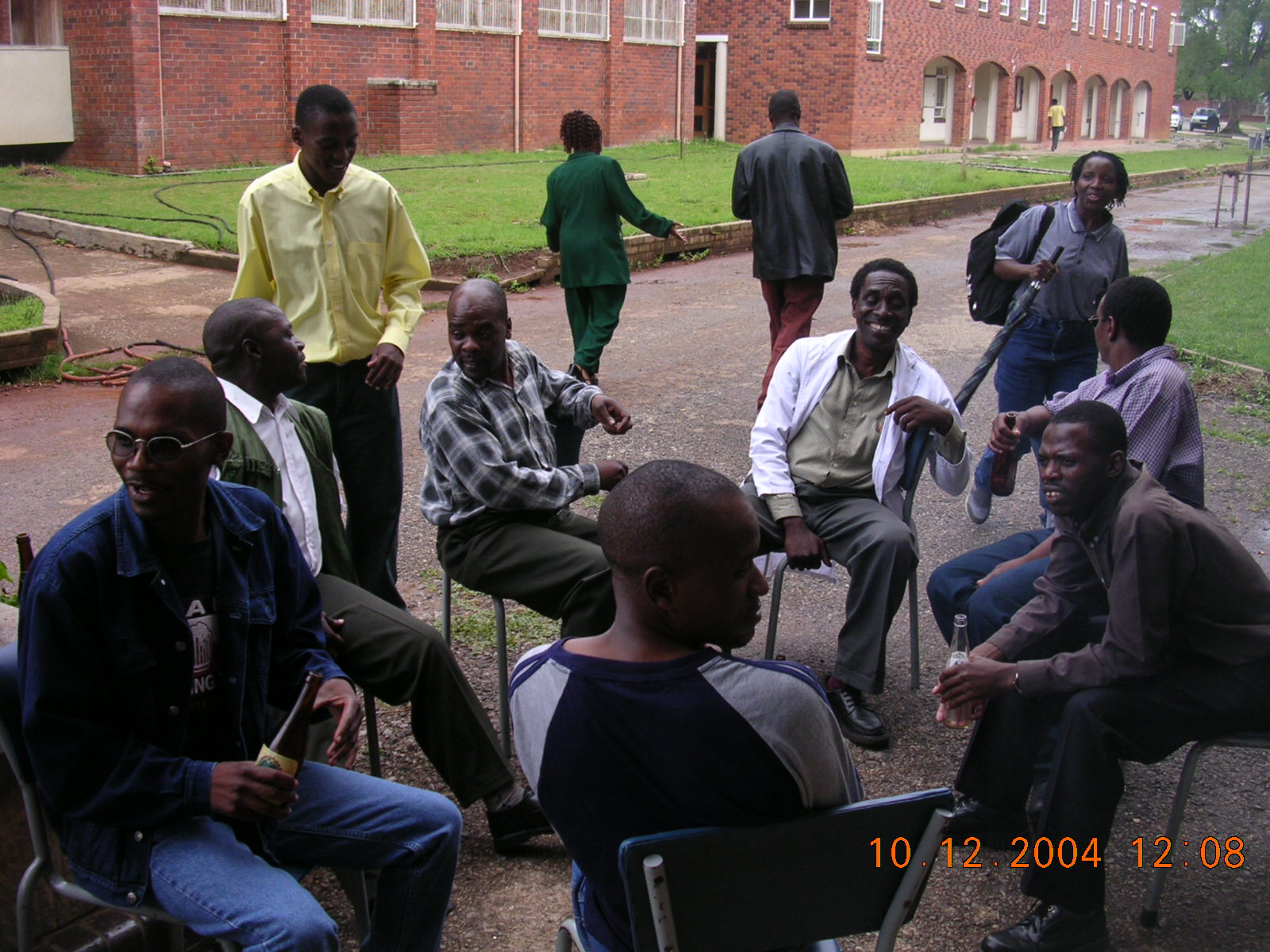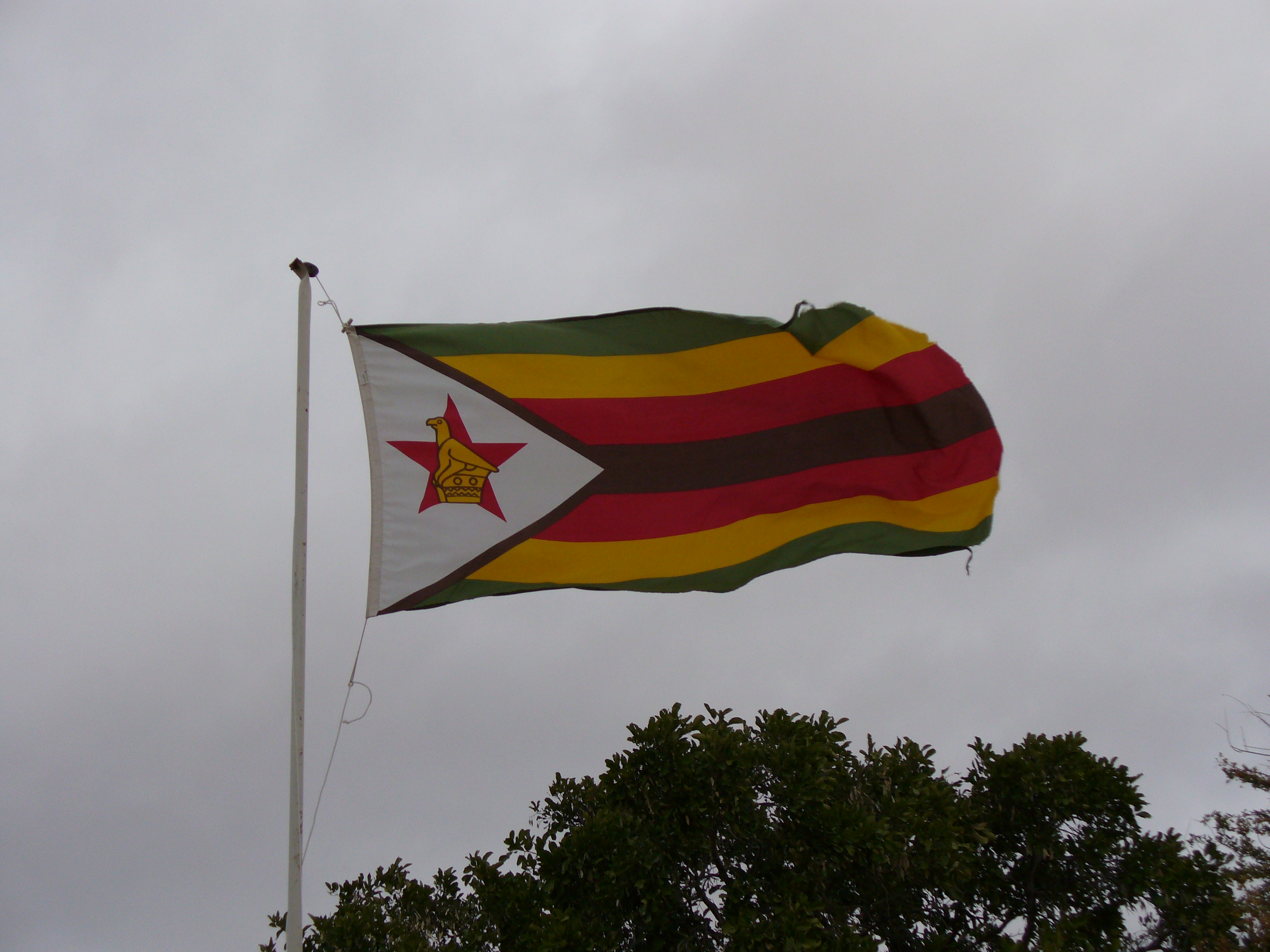|
Sarah Kachingwe
Sarah Kachingwe (née Chavunduka; 1936–2012) was a Zimbabwean politician and activist. She is the first black female to enroll at the University College of Rhodesia in 1957. She went on to become the secretary for Information, Posts and Telecommunications and also to serve on the board of Zimpapers and the Forestry Commission. Biography Kachingwe was born in the Rusape, Zimbabwe, in 1936. She attended Goromonzi High School. In 1957 she enrolled in the University College of Rhodesia, becoming the first black woman to do so. She graduated with a bachelor of arts degree in English and History. Kachingwe died at her home in Greendale, Harare, in 2012 from complications related to heart disease. Her funeral was attended by, among others, Deputy Prime Minister Professor Arthur Mutambara and Malawi's ambassador to Zimbabwe Dr Richard Mpoya. She was laid to rest at Harare's Greendale Cemetery. Legacy At her funeral, Deputy Prime Minister Arthur Mutambara presented the Flag of Zimbabw ... [...More Info...] [...Related Items...] OR: [Wikipedia] [Google] [Baidu] |
Rusape
Rusape is a town in Zimbabwe. Location It is located in Makoni District in Manicaland Province, in northeastern Zimbabwe. It lies approximately , by road, southeast of Harare, the capital and the largest city in Zimbabwe. Rusape is situated on the main road (Highway A-3), between Harare and Mutare, approximately , further southeast of Rusape. Rusape sits at an altitude of , above sea level. Overview Rusape is a large, sprawling town that has not quite reached city status. As is typical of Zimbabwean towns, Rusape has areas of low and high density population. The main high density area close to the town is ''Vengere'' township. Other suburbs have also been built since Independence in 1980. ''Mabvazuva'' to the east of town, and Tsanzaguru further out by the lakeside. Mabvazuva literally translates to "where the sun rises" (the East). There is also a new fast growing medium density suburb far east sprawling into the farmlands which is called ''Magamba Township''. Tsanzaguru is h ... [...More Info...] [...Related Items...] OR: [Wikipedia] [Google] [Baidu] |
Greendale, Harare
Greendale is an affluent suburb in eastern Harare, Zimbabwe noted for its residents of Shona and Indian descent. History A Certificate of Occupation and residence was granted to a German immigrant named, George Haupt, and Greendale Farm was transferred to Haupt and Henry Spreaker trading as Haupt and Co. on December 17, 1892. Haupt, an engineer from the Rhine Valley, was one of the first people to follow the occupation forces into the country. It is not known how the name, Greendale came about, but 1890 saw considerable rainfall (Father Hartmann measured it at 63 inches, or about twice our normal mean average of 850mm a year) – a record that stood until the 2008-2009 rain season. By the early 1900s the area was annexed to the city of Harare and earmarked for residential settlement. See also *Highlands Highland is a broad term for areas of higher elevation, such as a mountain range or mountainous plateau. Highland, Highlands, or The Highlands, may also refer to: Places Al ... [...More Info...] [...Related Items...] OR: [Wikipedia] [Google] [Baidu] |
Zimbabwean
Zimbabwe (), officially the Republic of Zimbabwe, is a landlocked country located in Southeast Africa, between the Zambezi and Limpopo Rivers, bordered by South Africa to the south, Botswana to the south-west, Zambia to the north, and Mozambique to the east. The capital and largest city is Harare. The second largest city is Bulawayo. A country of roughly 15 million people, Zimbabwe has 16 official languages, with English, Shona, and Ndebele the most common. Beginning in the 9th century, during its late Iron Age, the Bantu people (who would become the ethnic Shona) built the city-state of Great Zimbabwe which became one of the major African trade centres by the 11th century, controlling the gold, ivory and copper trades with the Swahili coast, which were connected to Arab and Indian states. By the mid 15th century, the city-state had been abandoned. From there, the Kingdom of Zimbabwe was established, followed by the Rozvi and Mutapa empires. The British South Africa C ... [...More Info...] [...Related Items...] OR: [Wikipedia] [Google] [Baidu] |
University College Of Rhodesia
The University of Zimbabwe (UZ) is a public university in Harare, Zimbabwe. It opened in 1952 as the University College of Rhodesia and Nyasaland, and was initially affiliated with the University of London. It was later renamed the University of Rhodesia, and adopted its present name upon Zimbabwe's independence in 1980. UZ is the oldest and best ranked university in Zimbabwe. The university has eleven faculties and one college (with faculties of Agriculture, Arts, Commerce, Education, Engineering, Law, Science, Social Studies, Veterinary Sciences and the College of Health Sciences) offering a wide variety of degree programmes and many specialist research centres and institutes. The university is accredited through the National Council for Higher Education, under the Ministry of Higher and Tertiary Education. English is the language of instruction. Although once a very successful university, UZ has been facing challenges since 2008 and now the university is on a rebounding driv ... [...More Info...] [...Related Items...] OR: [Wikipedia] [Google] [Baidu] |
Zimbabwe
Zimbabwe (), officially the Republic of Zimbabwe, is a landlocked country located in Southeast Africa, between the Zambezi and Limpopo Rivers, bordered by South Africa to the south, Botswana to the south-west, Zambia to the north, and Mozambique to the east. The capital and largest city is Harare. The second largest city is Bulawayo. A country of roughly 15 million people, Zimbabwe has 16 official languages, with English, Shona language, Shona, and Northern Ndebele language, Ndebele the most common. Beginning in the 9th century, during its late Iron Age, the Bantu peoples, Bantu people (who would become the ethnic Shona people, Shona) built the city-state of Great Zimbabwe which became one of the major African trade centres by the 11th century, controlling the gold, ivory and copper trades with the Swahili coast, which were connected to Arab and Indian states. By the mid 15th century, the city-state had been abandoned. From there, the Kingdom of Zimbabwe was established, fol ... [...More Info...] [...Related Items...] OR: [Wikipedia] [Google] [Baidu] |
University Of Zimbabwe
The University of Zimbabwe (UZ) is a public university in Harare, Zimbabwe. It opened in 1952 as the University College of Rhodesia and Nyasaland, and was initially affiliated with the University of London. It was later renamed the University of Rhodesia, and adopted its present name upon Zimbabwe's independence in 1980. UZ is the oldest and best ranked university in Zimbabwe. The university has eleven faculties and one college (with faculties of Agriculture, Arts, Commerce, Education, Engineering, Law, Science, Social Studies, Veterinary Sciences and the College of Health Sciences) offering a wide variety of degree programmes and many specialist research centres and institutes. The university is accredited through the National Council for Higher Education, under the Ministry of Higher and Tertiary Education. English is the language of instruction. Although once a very successful university, UZ has been facing challenges since 2008 and now the university is on a rebounding driv ... [...More Info...] [...Related Items...] OR: [Wikipedia] [Google] [Baidu] |
Goromonzi High School
Goromonzi High School is a secondary school located in Goromonzi, Mashonaland East Province, Zimbabwe. History Goromonzi school is located 35 kilometers from the Zimbabwean capital Harare, along the Harare-Mutare Road. The school was established in 1946 as the first boarding school for black secondary school students - expanding the role of education in what was then Southern Rhodesia, and designed to provide access to University education. Started initially as a boys school, the first girls were admitted under the Headmastership of John Hammond in 1954. Until that time, there had been suspicion amongst the people about education for women. The first intake was of only five girls but by 1959 the first Head Girl, Sarah Chavunduka, was admitted to the University of Rhodesia. The success of the school was such After Independence in 1980, the first African Headmaster was a former pupil and head boy of the school, Aeneas Chigwedere. Other notable students were Liberty Mhlanga who won a s ... [...More Info...] [...Related Items...] OR: [Wikipedia] [Google] [Baidu] |
Arthur Mutambara
Arthur Guseni Oliver Mutambara (born 25 May 1966) New Zimbabwe is a an politician. He became the president of the (MDC) in February 2006.Zimbabwe's 'outsider' faction leader BBC News He has worked as a director and CEO of Africa Technology and Business Institute since September 2003. Under a [...More Info...] [...Related Items...] OR: [Wikipedia] [Google] [Baidu] |
Flag Of Zimbabwe
The national flag of Zimbabwe consists of seven even horizontal stripes of green, gold, red and black with a white triangle containing a red five-pointed star with a Zimbabwe Bird. The present design was adopted on 18 April 1980. The soapstone bird featured on the flag represents a statuette of a bird found at the ruins of Great Zimbabwe. The bird symbolises the history of Zimbabwe; the red star beneath it officially stands for the nation's aspirations but is commonly thought to symbolise socialism, and the revolutionary struggle for freedom and peace. The design is based on the flag of Zimbabwe's ruling party, the Zimbabwe African National Union – Patriotic Front. History The country now known as Zimbabwe was formally known as Southern Rhodesia from 1895 to 1980—although simply Rhodesia was used locally between 1964 until June 1979 after Northern Rhodesia obtained its independence—and then Zimbabwe Rhodesia between June and December 1979. Southern Rhodesia achieve ... [...More Info...] [...Related Items...] OR: [Wikipedia] [Google] [Baidu] |
1936 Births
Events January–February * January 20 – George V of the United Kingdom and the British Dominions and Emperor of India, dies at his Sandringham Estate. The Prince of Wales succeeds to the throne of the United Kingdom as King Edward VIII. * January 28 – Britain's King George V state funeral takes place in London and Windsor. He is buried at St George's Chapel, Windsor Castle * February 4 – Radium E (bismuth-210) becomes the first radioactive element to be made synthetically. * February 6 – The 1936 Winter Olympics, IV Olympic Winter Games open in Garmisch-Partenkirchen, Germany. * February 10–February 19, 19 – Second Italo-Ethiopian War: Battle of Amba Aradam – Italian forces gain a decisive tactical victory, effectively neutralizing the army of the Ethiopian Empire. * February 16 – 1936 Spanish general election: The left-wing Popular Front (Spain), Popular Front coalition takes a majority. * February 26 – February 26 Inci ... [...More Info...] [...Related Items...] OR: [Wikipedia] [Google] [Baidu] |
2012 Deaths
This is a list of deaths of notable people, organised by year. New deaths articles are added to their respective month (e.g., Deaths in ) and then linked here. 2022 2021 2020 2019 2018 2017 2016 2015 2014 2013 2012 2011 2010 2009 2008 2007 2006 2005 2004 2003 2002 2001 2000 1999 1998 1997 1996 1995 1994 1993 1992 1991 1990 1989 1988 1987 See also * Lists of deaths by day The following pages, corresponding to the Gregorian calendar, list the historical events, births, deaths, and holidays and observances of the specified day of the year: Footnotes See also * Leap year * List of calendars * List of non-standard ... * Deaths by year {{DEFAULTSORT:deaths by year ... [...More Info...] [...Related Items...] OR: [Wikipedia] [Google] [Baidu] |




